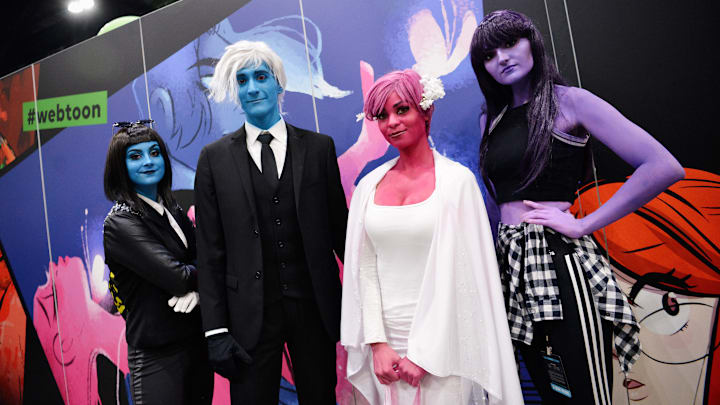Once upon a time, I was in a Barnes & Noble - which, to be fair, is a common occurrence for me. I was wandering around the YA section, not looking for anything in particular, when I came across a mother and son. The boy wanted a collection of Batman graphic novels, and his mom insisted he had to buy a real book. Even though I told myself I wouldn't step in, I found myself recommending my favorite superhero book: Renegades by Marissa Meyer. The mom thanked me afterward because she had been trying to get him to read "real books" I told her I disagreed with her assessment, and graphic novels were real books before turning and walking away.
Now, I'm not a huge graphic novel person. My personal collection consists of the four volumes of Sandman, six volumes of Lore Olympus, and a bunch of graphic novel memoirs I got for a class in grad school. I've liked a few standalone stories, such as Of Her Own Design, but typically I prefer the traditional novels. I am saying all this because I am what many people would consider the ideal reader. I try to read at least one book a week, across various genres, and look at them both from an enjoyable and critical standpoint. And as much as graphic novels aren't my thing, I will gladly be the loudest in the room shouting they should be considered real books.
"Why?" You may ask, considering this argument doesn't really apply to me. The answer is simple: I have seen so many students who have been discouraged from reading because they are told the books they enjoy aren't "real books" and are forced to read something else. This is one of the fastest ways to get children to stop reading; chances are, they will never pick up another book. The idea they hate reading will follow them for the rest of their lives because the stories they love aren't considered "real."
One of the biggest arguments I see against graphic novels is they decrease literacy skills because the reader relies on the pictures. The irony of this argument is the reality is actually the opposite. Having pictures in a text not only helps students figure out the meaning of unknown words but also helps them learn vocabulary words - the pictures help them make those connections so they understand what is in front of them. It's the same reason children's books are all picture books, having the visual reminder of a word can help your brain better comprehend and remember it. This is why if you go into an English-Language Learner (ELL) classroom, you'll see so many pictures with vocabulary - no matter the grade level! However, using graphic novels in this way is commonly used in ELL and special education classrooms to help students with comprehension issues or dyslexia.
Where graphic novels are essential for helping struggling readers, they also provide the rigor and higher-level thinking skills gifted students need to feel engaged in a class. That's right, you can help the struggling students AND the gifted students with the exact same text. There has been a lot of study into Visual Language Theory - which is how your brain comprehends pictures in a text. With graphic novels, the text doesn't make sense without the pictures, and the pictures don't make sense without the text. This lets students practice inferences - a skill students historically struggle with. Because of this, students can work to identify the depth and nuance within the stories, and explain how the pictures support the text and vice versa.
Now, I could continue on and on from a teacher's perspective as to why graphic novels are important to literacy skills, building storytelling, and so many other topics. However, I know most people don't get as excited about this as I do - so my final point has nothing to do with the science behind this. The last reason graphic novels are real books: they're fun!
Reading for pleasure is a skill so many people take for granted. Studies have shown people who read for pleasure are more successful, creative, and empathic than those who don't. Graphic novels still have the same traits as novels: plot, characters, settings, and themes. The only difference between the two is how all of these traits are presented - which to be fair, is different across all genres. Settings in a gothic romance will be more detailed than those in a romance novel, while characters will be studied more in realistic fiction than in an action/adventure story. And if we are willing to accept those differences between genres, then we need to be able to accept those differences between visual mediums. Especially when the result is always the same.
So if you believe graphic novels are not real books, I challenge you to read the research, and then take it one step further and find one to read. Graphic novels come in so many different genres I am sure whatever your preferred genre is, you can find it in graphic novel form. See if you enjoy it, see how it changes the way you not only view graphic novels but also your view of reading in general.
And then let your kids continue to read Captain Underpants. It may not seem like a big deal now, but encouraging their reading will be something that helps them for the rest of their lives.
